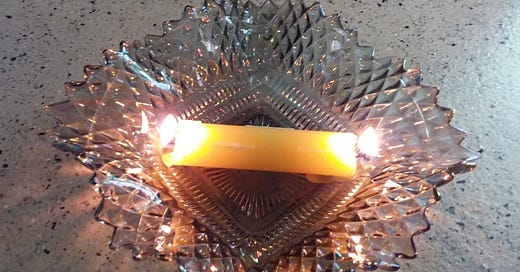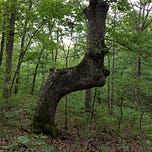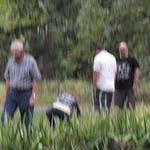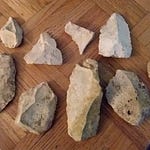My body, and yours, is full of chromosomes, the ends of which become a bit shorter with every cell division. Like a mysterious time-clock inside your body, your telomeres are the sands of life. Slowing the rate of telomere shortening, protecting the “ends,” might be a key to healthier aging.
Note about the image: In case you can’t tell, this is a candle burning from both ends.
My Mysterious Mind
I’ve been thinking about telomeres, the “protective” ends of our chromosomes; these telomeres are extra strands of DNA that shorten every time a cell divides. When cells are dying they have to divide to regenerate. Research has recently connected the shortening of telomeres with aging, cancer risk, and early onset of age-related disease. Furthermore, lifestyle factors may impact an individual’s health and lifespan by accelerating the shortening of telomeres. Telomere shortening is a natural process of growing older, the rate of which might indicate the pace of overall aging.
We’ve all heard for years how smoking, sedentary lifestyle, and poor nutrition are bad for our health; telomere research connects these lifestyle factors with a more rapid rate of telomere shortening. Unhealthy habits accelerate the disappearance of the protective ends of our chromosomes, which in turn increases the risk of diseases such as diabetes, heart disease, and osteoporosis. You already know that unhealthy lifestyle habits are unhealthy. No big news here. Recent research is revealing one of the mechanisms through which these habits put us at risk.
What I find more interesting is how research is showing that stress increases the pace of telomere shortening and thereby accelerates aging. Having heard for decades about the importance of not smoking, remaining physically active, and having a healthy diet, I am intrigued about the less-well-known value of stress management, specifically on preserving telomere length and slowing the rate of telomere shortening. Research on telomere preservation and effective stress management is limited, however, the preliminary findings point to the benefits of stress reduction through activities such as meditation and mindfulness-based interventions.
Ok, so being a stress junkie is bad for your telomeres. In my 20’s, I was accused of “burning the candle at both ends.” I used to pride myself in taking stress inventories and getting as high of a score as possible, all while being apparently healthy and energized. I am also known for saying, “It’s better to wear out than rust out.”
Now, in my 60’s, I have dramatically shifted my views. Still motivated to accomplish as much as possible, I am more aware of the restorative necessity of recreation and doing nothing. Every day I make time to sit quietly and just be alive. This morning, while pondering the 48-hour list of objectives before we fly, I heard thunder. For several minutes I just sat quietly and listened to the storm, watching the leaves jitter under the falling raindrops. I hope my telomeres slowed down their shortening while I just slowed down.
Message from Mystery Acres
It’s Monday as I write this; yesterday was Mother’s Day. In two days my husband and I will fly to the East Coast to see our son graduate with his MBA; we’ll also see our daughter and family who live 70 miles from our son. As I ponder my “to do” list for the next 48 hours, which includes this newsletter, I am remembering the past two days spent in the woods. It seemed a bit ridiculous to be gone right before another trip but I really wanted to be there. Plus, my husband and I wanted to get the lower level of our little cabin finished.
The goal for this trip to the cabin was flooring. The tiny bathroom and entry way needed their stick-on tiles; the rest of the floor would get a layer of leftover church carpet. The entire floor is only 12 feet by 16 feet, but the entire project seemed daunting. The carpet was stored on one of the lofts behind a bunch of other stuff stashed up there. The interior of the cabin was a mess from paneling and other projects.
We arrived mid-day on Saturday with plans to leave on Sunday afternoon. After the usual unloading supplies for our visit, I set to work on the tiles. Soon I was absorbed in the tile-by-tile process of covering the floor, a task completely divergent from my professional world of abstractions. The work was very relaxing for me, perhaps because it was so focused and finite. Oscar and Smudgie, initially wanting to help by being in the way, took sleeping spots in separate lawn chairs near my work area. Whenever I wanted or needed a break I would stand up, they would jump down, and, after I sat in a chair they would BOTH somehow find room on my lap. I would then be rendered helpless by their sleeping bodies until I dislodged them to get back to work.
This continued for several hours until it was time for our evening meal. I was delightfully satisfied by what I had accomplished, having only a tiny section by a wall left, probably less than a half-hour’s work. After we ate, my husband and I sat in our anti-gravity chairs, positioned in the clearing, to watch the stars appear. We relaxed there, probably preserving our telomeres, until it was time to head into the motor-home for the night.
The next morning, following breakfast and a short walk with the dogs, I finished the remaining tiles. We discovered a wiring problem in the bathroom, which required my husband’s attention for a long time. I decided to set to work on clearing the rest of the cabin in preparation for the carpet. Eventually, and with many dog-draped breaks, I cleared the loft to provide access to the carpet stored there.
Finally, in a surprising phase for both of us, we cut and installed the carpet. The dogs rested atop a stack of two mattresses while we worked. With the flooring done we moved the cabinets back and beds into place and took pictures. My only regret is not taking pictures 24-hours earlier.
The message of Mystery Acres is to focus on just the task in hand, while taking breaks as often as needed to have energy for the work. Don’t ruin a good day by trying to do too much. If you have dogs who just want to sit on your lap, let them. At day’s end, sit and watch the stars come out. I can think of no better way to slow down the shortening of telomeres.
Ancient Mystery’s Voice
“Jesus, tired from traveling, sat down.” (see John 4:6)
Several years ago I did a study of Jesus focused on his daily behavior. With so much attention given to His words and His miracles, my focus, instead, was on the ordinary ways He lived. John, one of the first of Jesus’s followers, wrote about Jesus with the purpose of helping his readers know Jesus, and, by knowing Him, believe He was the Son of God. Included in his book, aptly named “John,” are several insights into the behavior of Jesus the human being. One of these is found right before Jesus interacts with a woman from Samaria at a well in the heat of the day.
But right before that famous conversation where Jesus offers Himself as “living water” to a woman from an ethnic group despised by Jews, is a tiny phrase wherein John described Jesus as tired from walking and choosing to sit down by a well to rest. So simple. Jesus was tired so He sat down. These words aren’t essential to the rest of the story, but they are helpful to us.
Here the incarnate God Himself decided to sit down because He was worn out from activity. Not only is this evidence of His humanity, it is also an example for how we are to live. Here, recorded in words written two thousand years ago about the best example of any human being ever, we see that resting is a good thing when weary. John didn’t say Jesus was tired but decided to push through and keep going. No, here, in an ordinary way on an ordinary day, Jesus was tired so He sat down.
The words of Ancient Mystery show a balanced way to live, times of effort and times of rest. Life is not to be filled with endless activity, nor boundless recreation. Are you tired from your journey? Perhaps it is time to sit down and rest by a well.
Living in Mystery
What does it mean to live in the mystery of protecting your telomeres? Beyond the typical recommendations of healthy food and active lifestyle, the message of protecting your “ends” from rapid aging is one of rest. Contrary to the busy-ness of modern living, living in the mystery of preserving the ends of chromosomes is to know when enough activity is enough.
Living in the mystery of telomere preservation means, first, to be mindful of one’s need for rest. Signs of needing rest could be mental, physical, or emotional. Mentally, a decrease in focus could be a sign of needing to shift to a less intense cognitive activity. Physical signs of weariness, which is probably the easiest to detect, is when energy for a task is diminishing. Emotionally, feeling irritated or discouraged could be improved by taking a break.
Once detected, a need for a break can be met by the appropriate restoration. Mental fatigue can be resolved by doing something that doesn’t require concentration. This is where a walk or a chat with a friend or coworker might bring refreshment. Physical exertion is the more obvious signal to sit and rest for a few minutes. Even physical fitness devotees know the body needs these breaks during workouts. Lastly, emotional weariness can be remedied by anything that helps the heart to rest. Time in nature, a good book, or a craft are possibilities. For extreme emotional exhaustion, a professional counselor can provide heart restoration.
Living in the mystery of protecting telomeres also includes any efforts to manage stress. Anything from reducing excessive or unhealthy demands to a daily routine of quiet time or meditation are helpful strategies for reducing the negative impact of stress. I suggest a “what’s on your plate?” reflection; draw a circle and write down all of the things in your world making demands on you inside the circle. Then ask the Goldilocks question: Is this too little, too much, or just the right amount? Is there anything you want or need to add? If so, what can you take off your “plate” for a season so you have “room” for the addition? Is there anything on your plate that’s bad for you? If so, can you reduce or eliminate it?
I am a strong advocate for daily quiet time. Research may be limited on how much this helps preserve telomere length, but abundant research supports the mental, physical, and emotional benefits. The parasympathetic nervous system is able to reverse the wear and tear caused by the sympathetic nervous system’s response to stress, whether real or just perceived. The calm, resting state of being is the necessary condition for healing; it stands to reason it is also conducive to slowing the rate of telomere shortening.
As an old mom to young parents, I invite you to think about the lifestyle patterns you are teaching your children. Do you put limits on the schedule demands for your children, allowing time for rest, and even boredom? Does your family have one or more evening meals together at a table? Do you limit screen time from devices, computers, and television? Do you take walks or spend time outside together? These habits will lay the foundation for life and health for your children; and they’re good for you, too.
You can’t see your telomeres, the internal hourglasses of sand, that align with your long-term health and aging. Out of sight, but they don’t need to be out of mind. Daily habits of restoration, stress management, and balance promote mental, physical, and emotional well-being now. These lifestyle patterns also support the preservation of the tiny sentinels of health on your chromosomes, your telomeres.
Connecting With Mystery
Dear Lord of All Mystery, thank You for giving me a simple example of balanced living, with times of activity and those of rest. Help me to be more aware of when my mind, body, or heart have become weary. Direct me to the sources of rest I need. Help me to be mindful of slowing down my telomere deterioration by slowing down. Amen.
Notes from Dr. Mac
If you want to do your own investigation of any of the scriptures I use, I suggest you go to Bible Gateway. This free online version of the Bible allows a search of words or phrases in various translations. You might enjoy reading John 4 verse 26 and just meditating on the example of resting when tired.
You can find previous posts and podcasts in my ARCHIVE and organized compilations in the My “Books” section. You can also find Mystery’s Voice on Spotify.
Do you have thoughts to share? Please leave a comment below or through the Substack App, or email me privately at Dear Dr. Mac. I love to hear from you!














Share this post